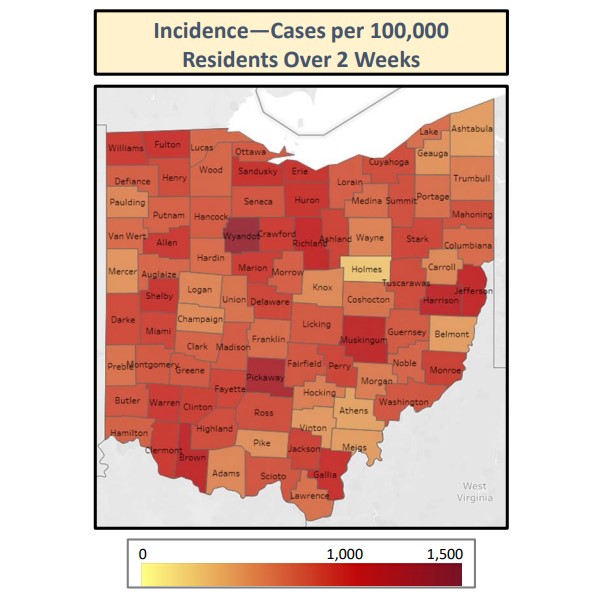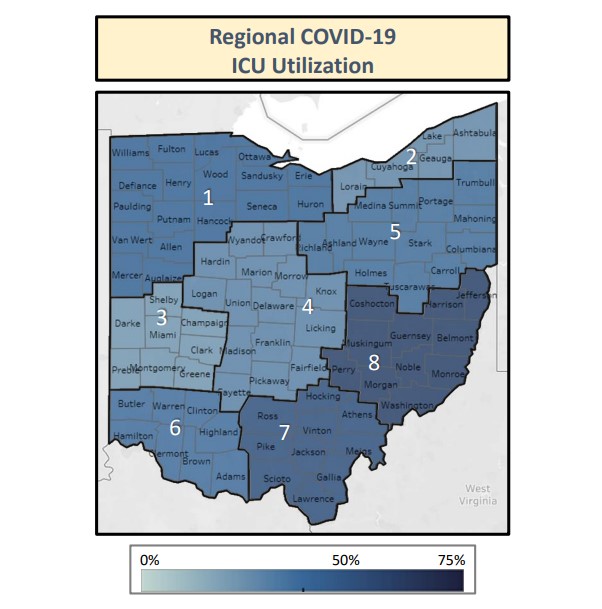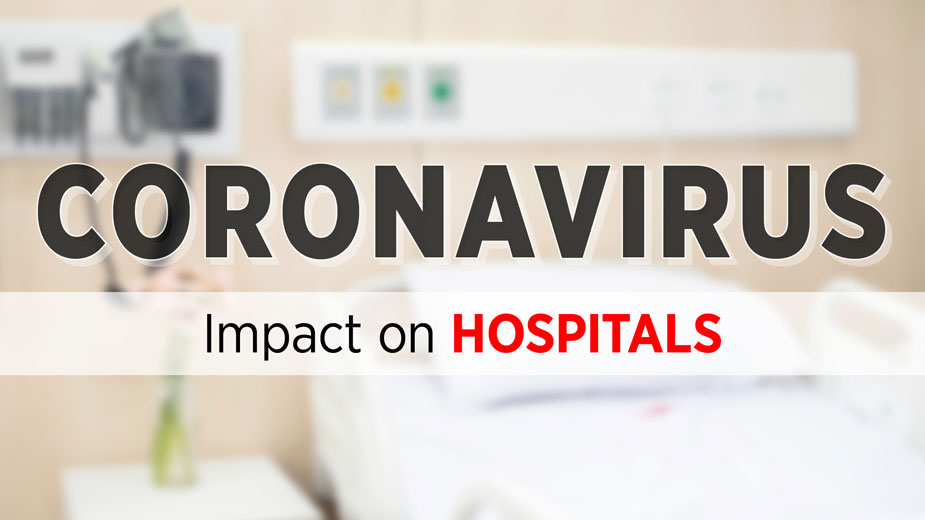ODH: COVID-19 Impact on Health System is ‘Severe and Unsustainable’
COLUMBUS, Ohio — Newly updated maps released by the Ohio Department of Health Thursday illustrate the spread of COVID-19 and its impact on the Buckeye State’s hospital intensive care units.

The first map—Cases per 100,000 Residents Over 2 Weeks—shows cases per capita during the past two weeks. Every county in Ohio now exceeds the Centers for Disease Control and Prevention’s threshold for high incidence, which is 100 cases per 100,000 residents. Case incidence is a measure of how many cases there are in each county, adjusted for population. The information illustrates the severity of COVID-19 transmission by county.
At the beginning of November, the statewide average of cases per capita during the previous two weeks was at 258. As of this week’s update, the statewide average is 658 cases per 100,000 residents during the past two weeks. There also are 71 counties that are at 500 or more, which means that at least one out of every 200 residents has tested positive for COVID during the past two weeks and are at risk of spreading it to others.
In the Mahoning Valley, Mahoning County reported the highest number of cases per 100,000 at 807.7, ranking 36th highest on the list. Columbiana County followed at 59th highest with 692 cases per 100,000 residents, and Trumbull at 70th highest with 604.6 cases.
The day this information was released, the state surpassed 700,000 total cases. As of Thursday’s update, Ohio had 4,367 patients currently hospitalized with COVID-19, of whom 1,059 were in the ICU and 722 were on a ventilator.
The second map—Regional COVID-19 ICU Utilization—shows the percent of all ICU patients who are COVID positive and is shown as a weekly average by hospital preparedness region.

The ICU is reserved for patients who are severely ill, whether from COVID-19 or from other diseases. At the beginning of November, about 15% of Ohio’s ICU patients were COVID-19 positive, or one out of every seven.
Now, that number is at 31%. That means that as of Thursday, one out of every three ICU patients is COVID-19 positive. The current impact on the health care system is severe and unsustainable, the ODH stated in a release.
ODH also released the Public Health Advisory System map today, which shows that 84 counties in the state are red and four — Hocking, Vinton, Gallia and Monroe — are orange. At these levels, residents are advised to exercise a high degree of caution and to limit activities as much as possible to help slow the spread of the virus, the ODH stated.
The Public Health Advisory System was designed as an early warning system to measure when cases and healthcare use were escalating. Today, those measures are all at an elevated plateau and the advisory system does not accurately reflect the sustained high levels.
While the state is no longer seeing sharp increases in new cases and hospitalizations, the ODH states that care should be taken when interpreting this data. Ohioans are encouraged to continue to follow the Stay Safe Ohio Protocol to help prevent Ohio hospitals from becoming overwhelmed, the department states.
On Thursday, Gov. Mike DeWine announced ODH Executive Director Stephanie McCloud signed a health order extending the state’s curfew that encourages residents to stay at home during the hours of 10 p.m. and 5 a.m. unless they are working or engaged in essential activity, according to a release. This extension applies until Jan. 23 at 12:01 p.m.
According to the release, essential activities may include:
- Obtaining necessary food, medical care or social services, or providing care for others.
- Engaging in activities essential to their health and safety or the health and safety of those in their households or people who are unable to or should not leave their homes, including pets.
- Seeking emergency services, obtaining medical supplies or medication, or visiting a health care professional including hospitals, emergency departments, urgent care clinics and pharmacies.
- Obtain necessary services or supplies for themselves and their family or members of their household who are unable or should not leave their home, to deliver those services or supplies to others. Examples of those include but are not limited to, obtaining groceries and food. Food and beverages may be obtained only for consumption off-premises, through such means as delivery, drive-through, curbside pickup and carryout.
- Obtain necessary social services.
- Going to work, including volunteer work.
- Taking care of or transport a family member, friend, or pet in their household or another household.
- Performing or obtaining government services.
The order doesn’t apply to:
- Individuals who are homeless.
- Individuals whose residences are unsafe or become unsafe, such as victims of domestic violence, are encouraged to leave their homes and stay at a safe, alternative location.
The order also does not apply to religious observances and First Amendment protected speech including activity by the media. It also permits travel into or out of the state and permits travel required by law enforcement or court order, including to transport children according to a custody agreement, or to obtain fuel.
Published by The Business Journal, Youngstown, Ohio.



